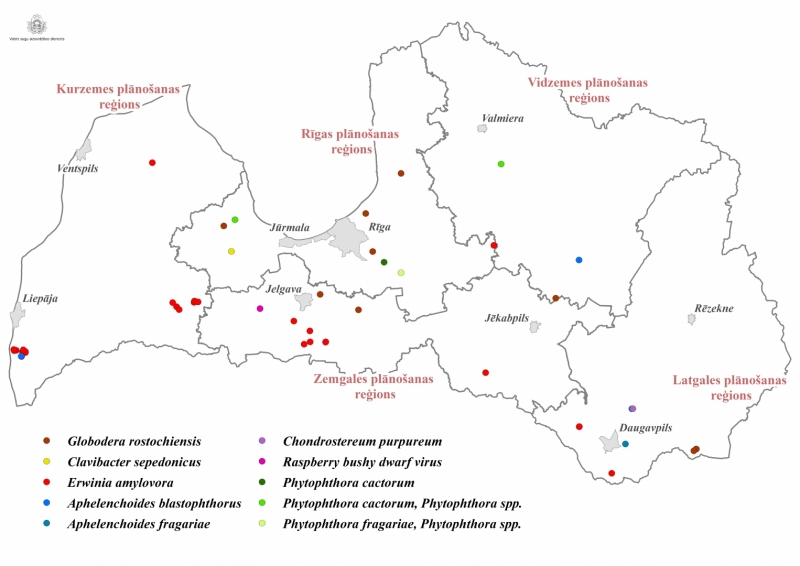Plant quarantine organisms can cause major economic and environmental damage. They are currently absent from the country, although conditions are favourable for their development, or they have a limited distribution and are being actively controlled. Often they have a wide host range and no natural enemies in the new area, control measures are difficult and costly. They threaten agricultural crops, forests, parks and green spaces as well as plant biodiversity.
In a new location, quarantine organisms have the right conditions to spread, but there are no natural enemies to limit their spread. As these organisms are newcomers to an area, there are most often no effective measures available to control, eradicate and control them.
Quarantine organisms are characterised by rapid spread and destruction of plants. In order to control these organisms, very strict measures have to be applied - not only the diseased or damaged plant has to be destroyed, but often also visually healthy plants.
In Latvia and the European Union, harmful organisms that pose a serious threat to plants and plant products are regulated in accordance with Regulation (EU) 2016/2031 of the European Parliament and of the Council of 26 October 2016 on protective measures against plant pests, which lays down common conditions for measures to protect Member States of the European Union against their introduction and spread.
Classification of regulated plant pests:
- European Union quarantine organisms;
- Quarantine organisms of protected zones;
- Non-quarantine organisms regulated by the Union.
Geographical distribution of regulated pests found in Latvia in 2020
For more information on plant pests worldwide, see the EPPO Global Database.
More about pests:
Consultations on damage caused by pests:
- regulated organisms:
- non-regulated organisms:




